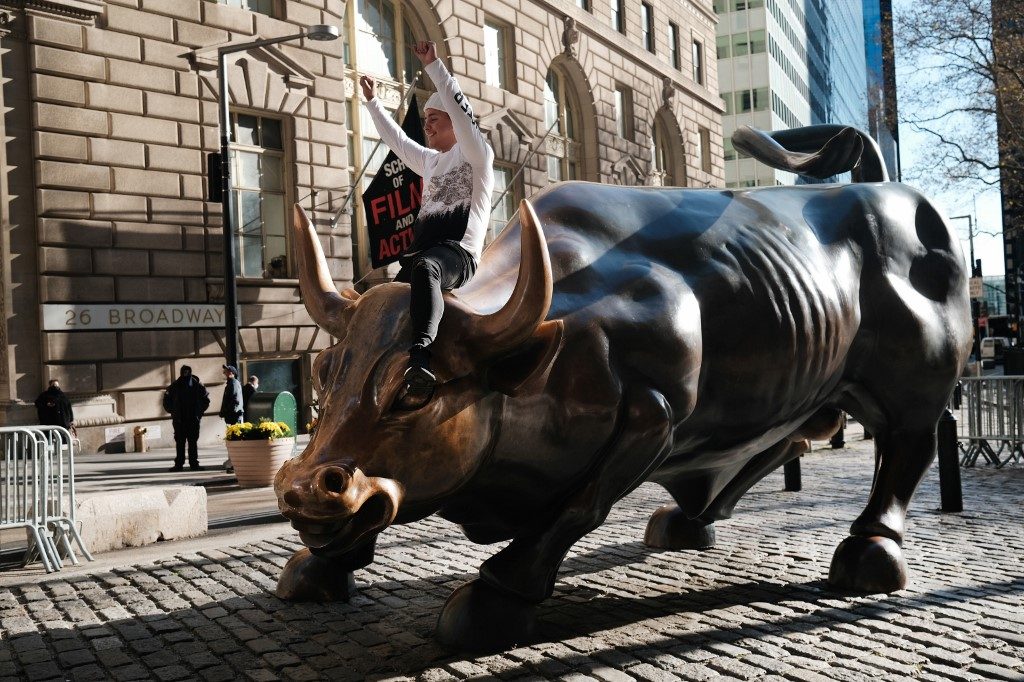SUMMARY
This is AI generated summarization, which may have errors. For context, always refer to the full article.

In hitting 30,000 points for the first time, the Dow Jones Industrial Average crossed yet another threshold in its seemingly inexorable climb to ever-loftier heights.
More than 100 years old
The Dow is one of the oldest equity indices in the world. It was created nearly 125 years ago by Dow Jones & Company, founded by journalists Charles Dow and Edward Jones, which also publishes The Wall Street Journal. The index is today managed by S&P Dow Jones Indices.
The index was calculated for the first time in May 1896 and comprised 12 holdings, including a leather company, a sugar refinery, and a tobacco producer.
Twelve years before the DJIA, Charles Dow had established the Dow Jones Transportation Average, which still measures transport industry valuations.
Rise and crises
The index has mostly risen since its inception, but the trend has been interrupted with often dramatic swoops.
Some of the more infamous examples include the crash associated with the Great Depression of 1929, the plunge of “Black Monday” in October 1987, and the upheaval of the 2008 global financial crisis.
The index hit 10,000 points in March 1999 during the internet “bubble” era and 15,000 points in May 2013 as the United States economy recovered from the Great Recession.
Surge under Trump
When Donald Trump took office in January 2017, the Dow stood around 20,000 points. Its more than 10,000-point climb since then marks an increase of 50%.
Trump has often taken credit for the index’s rise, including Tuesday, November 24, when he called 30,000 a “sacred” number that he attributed to his administration’s efforts to develop coronavirus vaccines.
But even with the Dow’s records under Trump, it has also encountered plenty of turbulence. After approaching 30,000 points in February, the index plunged during the worst of the coronavirus shutdowns soon thereafter, briefly sliding below 19,000 points.
Who’s who of the US economy
Since 1928, the Dow has consisted of 30 big companies intended to reflect the key sectors of the US economy including, energy, health, technology, housing, and finance.
Today’s index includes Apple, Boeing, Coca-Cola, Disney, McDonald’s, and Nike.
One quirk of the index is the weighting it gives to equities with higher share prices. That is one reason Boeing, currently around $218 per share, accounts for about 5% of the Dow, even though its market value is well below that of many of the other members.
The lineup of the index changes occasionally. The conglomerate General Electric had the longest run in the index from 1896 to 2018 before being bumped out.
An out-of-date measure?
Some investors consider the Dow to be an obsolete index because of the quirky way it is calculated and the limited number of companies in the group.
These critics typically prefer the S&P 500, which was created in 1957 and comprises 500 large equities from across the US economy, or the Nasdaq, which is focused on technology companies.
The Dow lacks some of today’s most influential companies, including Amazon, Facebook, and Google parent company Alphabet.
However, the index is still probably the best known by the general public in the United States when it comes to gauging the highs and lows of Wall Street.
– Rappler.com
Add a comment
How does this make you feel?
There are no comments yet. Add your comment to start the conversation.